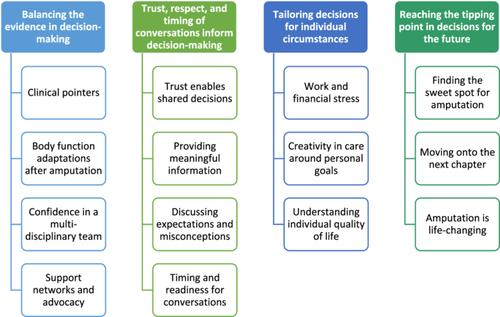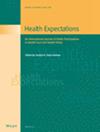Having a lower extremity amputation is a life-changing decision for people living with a diabetes-related foot ulcer. Although previous research has described both positive and negative lifestyle and function outcomes of diabetes-related amputations, limited research has been conducted on the decision-making processes leading up to the amputation. This study aimed to explore the perspectives of persons, healthcare practitioners and experts (including academics and specialists) on decision-making for people with a diabetes-related foot ulcer who may require a non-emergency amputation.
A qualitative descriptive study using semi-structured interviews enabled people to share their thought processes when making decisions for amputation. Twenty-six participants were interviewed, including nine people with a diabetes-related foot ulcer or amputation, nine health practitioners and eight experts located across five countries. There were 13 female and 13 male participants. Thematic analysis was used for data analysis.
Four themes described the decision-making considerations for amputation: ‘Balancing the evidence in decision-making’, ‘Trust, respect and timing of conversations inform decision-making’, ‘Tailoring decisions for individual circumstance’ and ‘Reaching the tipping point in decisions for the future’. Work commitments, functional and lifestyle impacts of amputation, the presence of support networks and clinical wound features formed the evidence for a decision for amputation.
Understanding quality of life needs ensured that decisions for amputation addressed expectations and lifestyle needs. Living with a diabetes-related foot ulcer presented daily challenges that pushed people to a tipping point, at which amputation was considered to overcome these hardships and enable them to move on to the next chapter of their life. Further research is required to understand how person-centred factors can be better incorporated alongside objective clinical assessments in decisions for amputation.
People with diabetes-related foot ulcers, health practitioners and experts shared their perspectives on the decision-making process for amputation through one-to-one interviews. Consideration of the person in the context of their life, environment and personal needs alongside the pathological factors is warranted.



